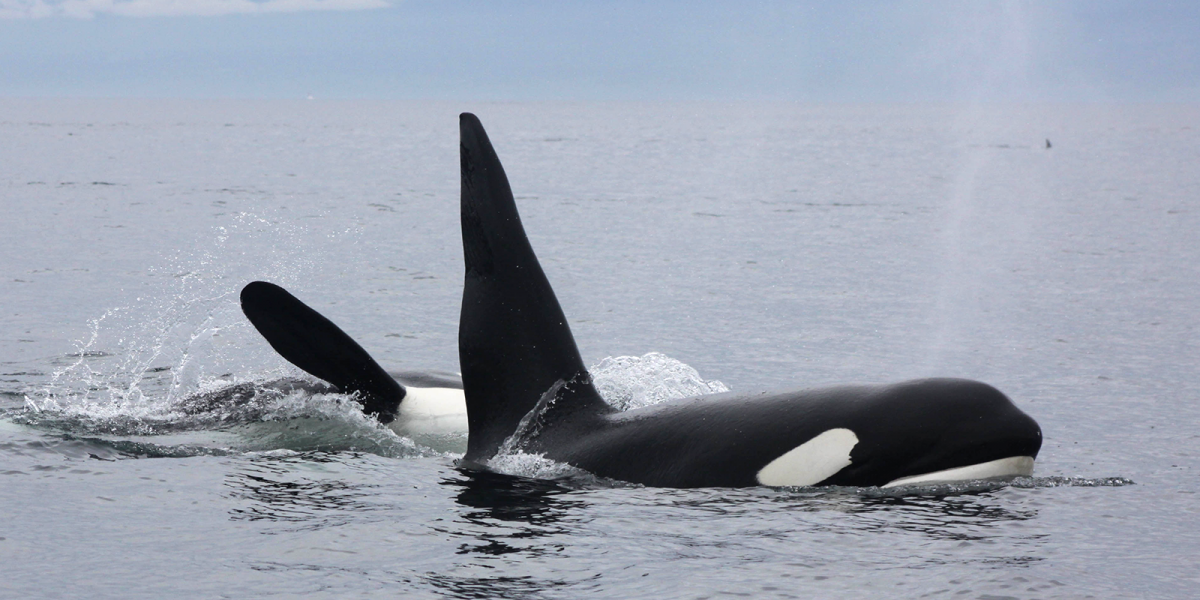Muscle and liver samples taken from Southern Resident killer whales and Bigg’s killer whales reveal the presence of harmful chemicals stemming from oil emissions and wildfire smoke.

This research is the first to study PAHs in killer whales in B.C. Image Credit: The University of British Columbia
In a recent publication in Scientific Reports, researchers have, for the first time, identified polycyclic aromatic hydrocarbons (PAHs) in orcas along the coast of British Columbia. The study also highlights the transfer of these chemicals from mother to fetus in utero.
Killer whales are iconic in the Pacific Northwest—important culturally, economically, ecologically, and more. Because they are able to metabolically process PAHs, these are most likely recent exposures. Orcas are our canary in the coal mine for oceans, telling us how healthy our waters are.
Dr. Juan José Alava, Study Senior Author and Principal Investigator, Ocean Pollution Research Unit, The University of British Columbia
Alava is also an Adjunct Professor at Simon Fraser University.
Polycyclic aromatic hydrocarbons (PAHs), a class of chemicals present in coal, oil, and gasoline, are known to exhibit carcinogenic, mutagenic, and toxic effects on mammals. These substances enter the ocean through various means, including oil spills, coal combustion, and smoke particles from forest fires.
In a comprehensive study, scientists examined muscle and liver samples from six transient killer whales (Bigg's) and six Southern Resident killer whales (SRKWs) stranded in the northeastern Pacific Ocean between 2006 and 2018. The analysis targeted 76 different PAHs, revealing their presence in all samples, with at least half of the PAHs appearing in more than 50% of the samples.
Among the identified compounds, a PAH derivative called C3-phenanthrenes/anthracenes constituted 33% of the total contamination across all samples.
These particular forms of PAHs, known as alkylated PAHs, are recognized for their increased persistence, toxicity, and tendency to accumulate more within the bodies of organisms or animals compared to parental PAHs.
This study represents the first investigation of PAHs in killer whales in British Columbia. Although the average contamination level observed was lower than in previous studies of cetaceans in the Gulf of California, it was nearly twice as high as the contamination found in blood samples from captive killer whales in Icelandic waters.
SRKW Contaminants Largely From Human Emissions
The predominant contaminants identified in Bigg’s killer whales originated primarily from the combustion of coal and vegetation, including exposure to forest fires. In contrast, Southern Resident killer whales (SRKWs) exhibited contaminants associated with oil spills and the burning of fossil fuels such as gasoline.
The researchers suggest that this disparity may be attributed to the distinct habitats of the two groups. Bigg's killer whales inhabit a range extending from California to southeastern Alaska and into the North Pacific Ocean, while SRKWs remain closer to more polluted urban environments in the vicinity of the Salish Sea.
Furthermore, variations in feeding preferences, behavior, and metabolism among these whale populations could also influence the accumulation of contaminants in their bodies.
B.C.’s coast is experiencing oil pipeline developments, oil tanker traffic, industrial effluents, forest fires, stormwater runoff and wastewater. These activities put toxic PAHs into the marine food web and, as we saw here, they can be found in orcas, the apex predator.
Kiah Lee, Study First Author and Undergraduate Student, Institute for the Oceans and Fisheries, The University of British Columbia
Currently, Lee is A Master’s Student at the University of Oslo.
Improve Pollution Management
There’s only a small population to draw from—74 individuals in the case of the Southern Residents. There are many potential causes for their decline, pollution being one.
D. Stephen Raverty, Study Co-Author and IOF Adjunct Professor and Veterinary Pathologist, B.C. Ministry of Agriculture and Food, The University of British Columbia
'Luna,' one of the whales under examination, was an orca that experienced separation from its mother as a calf. Luna had significant human interaction and inhabited diverse environments, possibly explaining the combination of hydrocarbon contaminants observed in this particular individual.
“The preliminary findings from this study will add key information to inform management approaches in killer whale habitats. The source of the PAHs is often from human activity and it is important we have baseline data on current PAH levels in killer whales to monitor those trends and impacts in marine ecosystems into the future,” stated Paul Cottrell of Fisheries and Oceans Canada.
In the long run, it is essential for humanity to decrease and eventually eradicate the use of fossil fuels to address climate change and safeguard marine biodiversity.
Dr. Alava stated, “This would also serve to bolster the resilience and health of marine ecosystems, benefiting communities that rely on them such as coastal First Nations peoples as well as future generations.”
Journal Reference
Lee, K., et al. (2023) Polycyclic aromatic hydrocarbon (PAH) source identification and a maternal transfer case study in threatened killer whales (Orcinus orca) of British Columbia, Canada. Scientific Reports. https://doi.org/10.1038/s41598-023-45306-w.